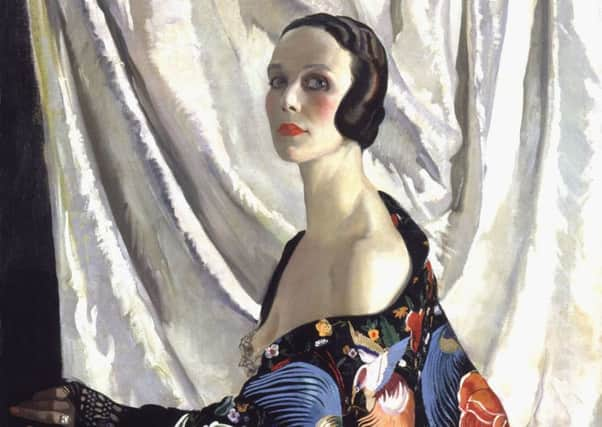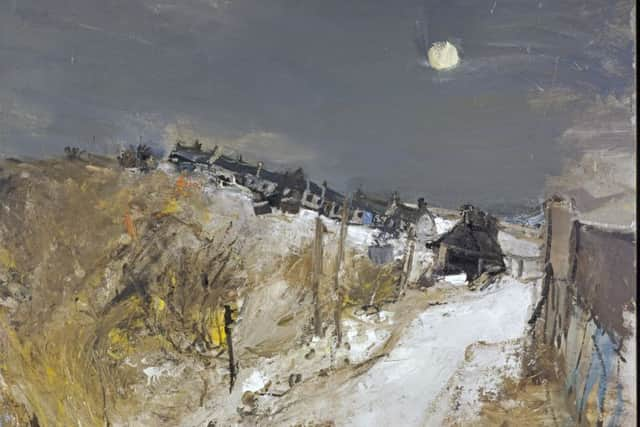Scotland’s unsung female artists get spotlight as last


IN 1938, at a London party in honour of Ethel Walker, who had just been made a CBE, one person had the misfortune to suggest that the Scot was considered by many to be the top woman artist in the country. Walker wasted no time in putting them right: “There is no such thing as a woman artist. There are only two kinds of art – bad and good. You can call me a good artist if you like.”
The struggle of women artists to be evaluated alongside their males peers is a long one. Some would say it goes on. Certainly, many accounts of Scottish art history barely mention a woman until Anne Redpath, even Joan Eardley. But detective work uncovers a very different picture.
Advertisement
Hide AdAdvertisement
Hide AdAnd in defiance of Walker’s words, Modern Scottish Women: Painters and Sculptors 1885-1965, which opens this weekend at the Scottish National Gallery of Modern Art and includes the work of 45 female artists, brings aspects of that story together for the first time. Curator Alice Strang and her team have unearthed a remarkable body of works from private collections and gallery storerooms, many of which have barely been exhibited. They are works that not only stand comfortably beside the output of better known male peers, but also push forwards the boundaries of art.


Among fellow curators at the National Galleries, Modern Scottish Women has become known as the “who knew?” show. Flora Macdonald Reid created works of ambition, scale and vitality which would sit easily alongside her peers, the Glasgow Boys; Mary Cameron painted bullfights in Spain in the 1890s and won medals at the Paris salons; Doris Zinkeisen travelled with the St John Ambulance across Europe in 1945 and painted the liberation of Belsen – who knew?
Strang says she became alert to the possibility of a show of women’s art when researching the Scottish Colourists. “I kept noticing the names of women artists coming up around the edges. I remember thinking, who are these women, what are they doing, what are they making, what are their circumstances? And why don’t we know more about them and their work?”
The women in this exhibition pursued careers as professional artists at a time when the odds were stacked against them. Some defied their families’ wishes to go to art school. While there, they faced a battle to access the life class because it was considered improper for women to draw nudes. Membership of professional artists’ organisations was often closed to them – the RSA first admitted a woman to full membership in 1944, the Scottish Art Club not until 1982. And then there were attitudes. In 1885, RSA president Sir William Fettes Douglas described women’s art as “like a man’s work, only weaker and poorer”.
But things were changing. Fra Newbery, who became head of Glasgow School of Art in 1885, created unprecedented opportunities for female staff and students – by 1912, 47 per cent of students at GSA were female. Edinburgh College of Art accepted women from its opening in 1908. “There were very obvious inequalities,” says Strang. “But I’ve tried to take a glass-half-full approach, saying these are artists who did things for themselves, who won prizes, had solo exhibitions.”
In the vanguard were remarkable women who let nothing stand in their way. Mary Cameron – fluent in four languages, with studios in Edinburgh, Madrid and Seville – became known as “Bloody Mary” for her ambitious paintings of bullfights in Spain. Strang says: “She does the most astonishing, technically brilliant, compositionally ambitious paintings. Critics were always at pains to stress her femininity because her subject matter was so unfeminine and she was having none of it. She would say, ‘Look at my paint-spattered hands, my filthy smock, painting is hard manual labour’.”
It took a photocopied page from an exhibition catalogue from 1930 to alert the team to a remarkable series of vorticist-influenced paintings by Agnes Miller Parker, the wife of the painter William McCance. “It’s generally understood that McCance, William Johnston and JD Fergusson were the Scottish artists in London between the wars who responded most to developments in art in Europe. These paintings show that Agnes Miller Parker had this quite exceptional grasp of the movements that have their roots in cubism and vorticism. By putting those on the walls, we’re rewriting art history. We’re saying next time someone writes a textbook about Scottish art history you have to mention Johnston, McCance and Alice Miller Parker.”
There were many reasons why these artists received less attention than their male peers. Often their careers were short, so they did not built up large bodies of work – sometimes for tragic reasons. Bessie MacNicol, for example, died in childbirth aged 34. Other women simply stopped work due to domestic responsibilities. Cecile Walton – painter of two remarkable works in the exhibition, whose career ended in her thirties when she divorced and had to take paid employment to support her two sons – wrote of “the tragedy that attends so often the attempt to reconcile career and domestic life”.
Advertisement
Hide AdAdvertisement
Hide AdStrang says: “You don’t want the women’s own stories to get in the way of the paintings and sculptures that we’re showing, but at the same time, I think when you get to know their story, it can increase your admiration for them and what they did achieve.”
One of the stars of the show is Dorothy Johnstone, who taught at Edinburgh College of Art until 1924, when she married her colleague, DM Sutherland, and was forced to resign due to the bar on married women holding full-time teaching posts. She continued to paint portraits – an obituary described her as “artist’s wife and portrait painter” – but never returned to the ambition and scale of her works of the 1920s. “As a part-time working mother in 2015, I think that’s awful, but according to her daughter and daughter-in-law, she didn’t feel she was sacrificing her career,” says Strang.
In the same way, Anne Redpath, who painted much less when she was raising her children, considered this to be another expression of her creativity.
By the end of the Second World War, attitudes were changing significantly. Women such as Bet Low and Wilhelmina Barns-Graham pushed the boundaries of abstraction, though Joan Eardley still caused a storm in Edinburgh artistic society when she exhibited Sleeping Nude, a painting of her friend Angus Neill, in 1955. “How dare a female artist paint a male nude?” Strang says, eyebrows raised. “People couldn’t believe it. Never mind that male artists had been painting female nudes for centuries!”
She hopes the show is a beginning, not a conclusion, and that it will bring more work to light. “There are so many more works to find and see and share, and there must be photos, letters, diaries that we can learn from. I really hope visitors will come forward and say ‘I sat for Ivy Gardner Proudfoot’, or ‘Guess what I’ve got hanging in my drawing room?’ This show has been a journey of discovery for me, and there’s so much more to find out.”
Twitter: @wordsmansfield
• Modern Scottish Women: Painting and Sculpture, 1885-1965 is at the Scottish National Gallery of Modern Art, Edinburgh, until 26 June, www.nationalgalleries.org